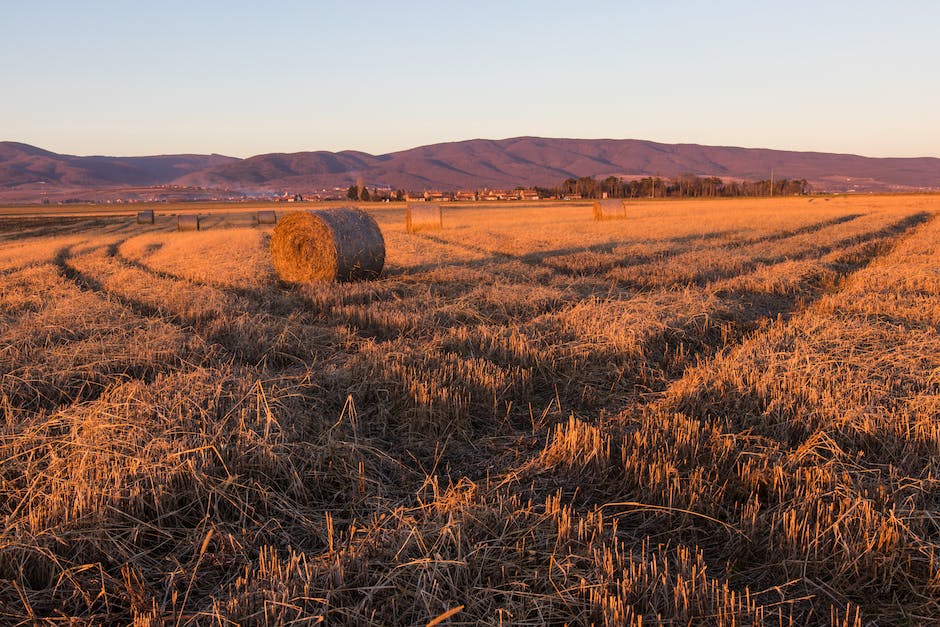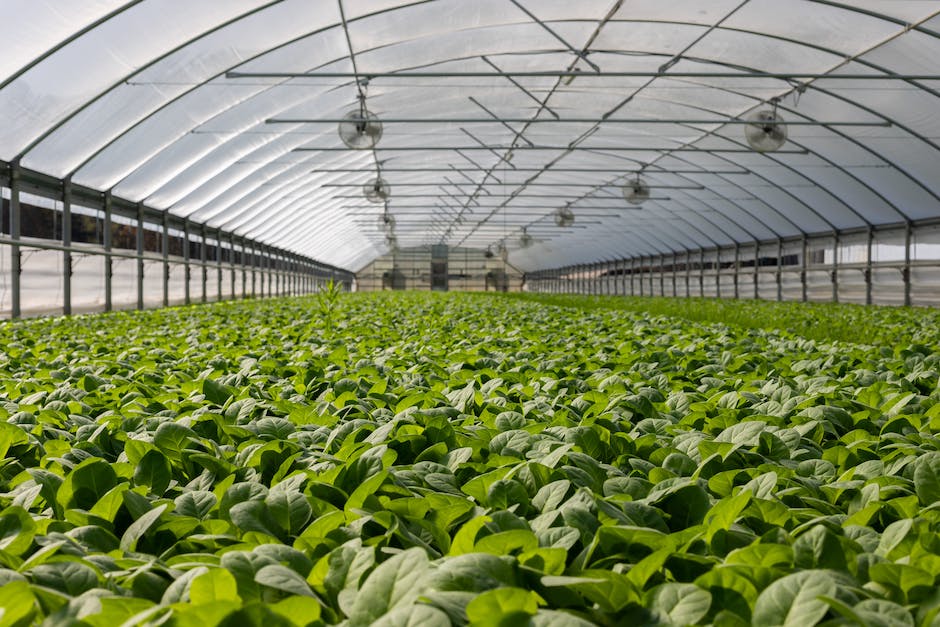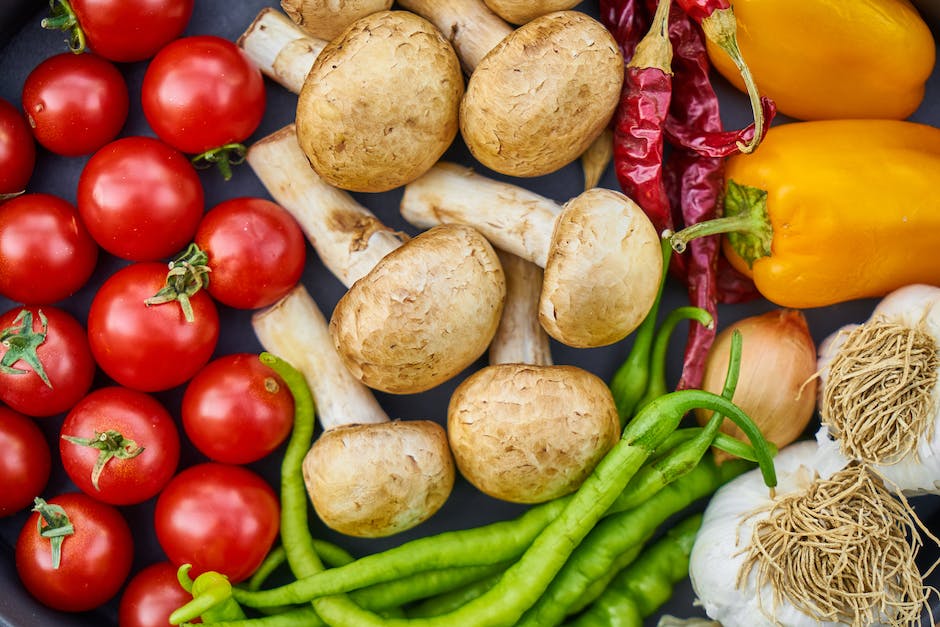What’s Hydroponic Farming
Hydroponic farming is an innovative and efficient method of growing plants without the need for soil. Instead, this system relies on a nutrient-rich water solution to provide essential minerals and vitamins directly to the plant’s roots. This unique approach to farming has gained popularity in recent years due to its numerous benefits and potential for higher yields compared to traditional soil-based agriculture.
In hydroponic farming, plants are typically grown in controlled environments such as greenhouses or indoor setups, where factors like temperature, humidity, and lighting can be optimized for optimal growth. By eliminating the constraints of soil, hydroponics allows for year-round cultivation regardless of weather conditions, making it an ideal choice for areas with unfavorable climates or limited arable land.
One of the key advantages of hydroponic farming is its ability to conserve water resources. Unlike conventional agriculture, where a significant amount of water is lost due to evaporation or runoff, hydroponics recirculates the water system, minimizing wastage. Additionally, the use of water-soluble nutrients in hydroponics ensures that plants receive precisely what they need for optimal growth, reducing the dependency on chemical fertilizers and minimizing potential soil pollution.
Another benefit of hydroponic farming is its potential for higher yields. By providing plants with an optimal balance of nutrients and conditions, hydroponics allows for faster growth and efficient use of resources. This method also eliminates the risk of soil-borne diseases and pests, reducing the need for chemical pesticides and making hydroponic produce safer and healthier for consumption.
While hydroponic farming does require an initial investment in infrastructure and specialized equipment, the long-term benefits outweigh the costs for many farmers and businesses. The controlled environment of hydroponics gives growers better control over their crops, leading to consistent quality, faster production cycles, and the potential for higher profits.
In conclusion, hydroponic farming is a modern and sustainable method that offers numerous advantages over traditional soil-based agriculture. With its ability to conserve water, increase yields, and minimize environmental impact, hydroponics presents an exciting opportunity for farmers and businesses to embrace sustainable and efficient farming practices. As the demand for fresh and locally grown produce continues to rise, the integration of hydroponics into the agricultural industry is set to play a significant role in shaping the future of food production.
Definition and explanation of hydroponic farming (understanding the concept and how it differs from traditional soil-based farming)
Hydroponic farming is a modern farming method that involves growing plants without the use of soil. Instead, plants are grown in a nutrient-rich water solution that provides all the necessary minerals and nutrients they need to thrive. This innovative technique utilizes inert mediums such as coconut fiber, perlite, or rockwool to anchor the plants’ roots and allow them to access the water and nutrients.
What sets hydroponic farming apart from traditional soil-based farming is its controlled environment and precision management. In hydroponic systems, factors like pH levels, nutrient concentrations, temperature, and lighting can be meticulously controlled and optimized to maximize plant growth. This level of control enables farmers to create ideal conditions for plants, ensuring consistent yields and faster growth rates.
Another distinguishing factor of hydroponic farming is its ability to save water. Unlike traditional farming, which often requires large amounts of water due to evaporation and runoff, hydroponic systems recycle and reuse water, resulting in significant water conservation. This makes hydroponic farming an environmentally friendly and sustainable solution to food production, particularly in regions facing water scarcity or limited arable land.
Moreover, hydroponic farming can be practiced throughout the year, regardless of climate or season. By relying on artificial lighting, hydroponic farmers can provide plants with the necessary light spectrum for photosynthesis, enabling year-round cultivation and reducing dependence on seasonal changes.
The precise control and optimized conditions provided by hydroponic farming also offer several advantages over traditional agriculture. By eliminating the need for pesticides and herbicides, hydroponic farming minimizes exposure to harmful chemicals, making it a healthier choice for consumers. It also reduces the risk of soil-borne diseases and pests, as the growing medium is sterile and prevents the proliferation of harmful organisms.
In conclusion, hydroponic farming is a revolutionary approach to agriculture that offers numerous benefits. From water conservation and year-round production to enhanced plant growth and reduced environmental impact, this modern farming method is shaping the future of food production. As the world faces increasing challenges in terms of population growth and limited resources, hydroponic farming provides an efficient and sustainable solution to feed the ever-growing global population.
Historical background of hydroponics (tracing the origins and development of hydroponic farming)

Hydroponic farming, a modern technique of growing plants without soil, may seem like a recent innovation, but its roots can be traced back to ancient civilizations. The concept of hydroponics can be attributed to the Hanging Gardens of Babylon, one of the Seven Wonders of the Ancient World.
The Babylonians were known for their advanced understanding of agriculture and engineering. Around 600 BCE, they developed a complex system of gardening that allowed plants to grow above ground, suspended in a series of terraces. These terraces were supported by stone pillars and irrigated using a sophisticated system of water channels. This early form of hydroponics allowed plants to thrive in a controlled environment, even in arid regions.
Over time, hydroponics continued to evolve across different cultures and civilizations. The Aztecs, for example, were known to practice a form of hydroponics called “chinampas.” These were artificial islands built on shallow lakes, where plants were grown using a combination of floating rafts and soil-less farming techniques.
The scientific study of hydroponics began in the early 17th century. Dutch scientist Jan van Helmont conducted groundbreaking experiments in which he demonstrated plant growth solely through water, without the presence of soil. These experiments laid the foundation for further research and advancements in hydroponic farming.
However, it wasn’t until the 20th century that hydroponics gained significant attention and widespread adoption. In the 1930s, scientists at the University of California, Berkeley, developed the first nutrient solution specifically formulated for growing plants hydroponically. This breakthrough opened up new possibilities for controlled environment agriculture and paved the way for the modern hydroponic industry.
Since then, hydroponics has been embraced by various industries and has become increasingly popular in urban settings, where arable land is limited. The use of hydroponics allows for year-round crop production, higher yields, and efficient water usage. It also minimizes the need for herbicides and pesticides, making it an environmentally friendly approach to farming.
With advancements in technology, hydroponics continues to evolve. Modern hydroponic systems range from basic setups like nutrient film technique (NFT) and deep water culture (DWC) to more advanced systems involving automation and computerized monitoring.
In conclusion, hydroponic farming has a rich historical background, stemming from the ancient hanging gardens to the innovative methods of today. The combination of ancient wisdom and modern technology has brought us a sustainable and efficient approach to agriculture that holds immense potential for feeding a growing population and supporting sustainable food production in the future.
Advantages of hydroponics (highlighting the benefits, such as increased crop yield and water efficiency)

Hydroponic farming offers numerous advantages over traditional soil-based agriculture. In this section, we will delve into the key benefits of hydroponics, showcasing its ability to enhance crop yield while maximizing the efficient use of water resources.
1. Increased Crop Yield:
One of the most significant advantages of hydroponics is its potential to boost crop yield. By providing plants with optimal growing conditions, such as precise nutrient delivery and the ideal pH balance, hydroponic systems eliminate many of the limitations imposed by soil-based farming. As a result, plants grow faster and healthier, ultimately producing higher yields of fruits, vegetables, and herbs. The controlled environment enables farmers to have better control over the growth cycle, allowing for multiple harvests in a year and a more streamlined production process.
2. Water Efficiency:
Traditional farming methods often require substantial amounts of water to sustain crops, which can strain local water supplies, especially in water-scarce regions. Hydroponics, on the other hand, is renowned for its exceptional water efficiency. By utilizing a closed-loop watering system, hydroponic farms consume significantly less water compared to soil-based irrigation. This is because water is recirculated within the system, ensuring minimal wastage. Additionally, hydroponics enables precise water delivery to each plant, preventing over or under-watering and optimizing resource utilization.
3. Nutrient Optimization:
In hydroponics, essential nutrients are directly delivered to the plant roots through a nutrient-rich solution, eliminating the reliance on soil nutrients. This precise delivery method allows for customizing the nutrient mix and concentrations to match the plant’s specific needs, promoting healthy growth and maximizing nutrient absorption. By ensuring that plants receive an optimal balance of nutrients, hydroponic farming can enhance the nutritional content and overall quality of harvested produce.
4. Pest and Disease Control:
Traditional farming often faces challenges related to pests and diseases that can significantly impact crop health and productivity. However, hydroponics minimizes these risks. Without soil, many pests and diseases that commonly thrive in traditional farming environments are mitigated or eliminated. The controlled conditions in hydroponic systems discourage the presence of harmful organisms, reducing the need for chemical pesticides and insecticides. As a result, hydroponics offers a more sustainable and eco-friendly approach to farming.
Overall, the advantages of hydroponics, such as increased crop yield, water efficiency, nutrient optimization, and improved pest control, make it an attractive alternative to traditional soil-based farming. By harnessing advanced technologies and innovative growing techniques, hydroponic farming not only enhances productivity but also promotes sustainable and responsible agriculture.
Types of hydroponic systems (exploring various methods like nutrient film technique, deep water culture, and aeroponics)

Hydroponic farming, a modern agricultural method, is gaining popularity for its ability to maximize yield and minimize resource usage. One of the key factors that make hydroponics unique is the wide variety of systems available to cultivate plants without soil. Let’s dive into some of the most commonly used types of hydroponic systems:
1. Nutrient Film Technique (NFT):
NFT is a popular hydroponic system that involves a continuous flow of a thin film of nutrient-rich water over the plant roots. It utilizes a sloping tray or channel, allowing the nutrient solution to flow over the roots and back into the reservoir. The roots obtain essential nutrients by absorbing them directly from the nutrient film. NFT systems are particularly well-suited for growing leafy greens and herbs.
2. Deep Water Culture (DWC):
Deep Water Culture is another widely used hydroponic system. In DWC, plants are suspended directly in a nutrient-rich water solution, with their roots submerged and continuously oxygenated. The roots gather nutrients from the water, while an air pump provides oxygen through air stones or diffusers. This oxygenation process helps facilitate root growth and nutrient absorption. DWC is commonly used for growing larger plants like tomatoes, cucumbers, and peppers.
3. Aeroponics:
Aeroponics takes hydroponics to the next level by suspending plants in a mist or air environment, allowing their roots to be continuously sprayed with a fine mist of nutrient-rich water. This mist provides both moisture and nutrients to the roots while allowing them to receive ample oxygen. Aeroponic systems utilize timers and pumps to deliver the misting cycle at regular intervals. Due to the high level of control over the root environment, aeroponics is often preferred for growing sensitive plants, such as orchids and lettuce.
4. Drip System:
A classic and commonly used hydroponic system, the drip system, involves providing plants with a consistent drip feed of nutrient solution. A timer-controlled pump delivers the nutrient solution through small tubes to individual plant pots or a grow tray. Excess nutrient solution that isn’t absorbed by the plants drains back into a reservoir for recycling. The drip system is versatile and suitable for various plant types, making it a popular choice for both commercial and hobbyist hydroponic growers.
These are just a few examples of the many hydroponic systems available. Each system has its own advantages and is suitable for different plants and growing conditions. Understanding the various types of hydroponic systems allows growers to choose the most appropriate method for their specific needs, ensuring optimal growth and maximizing the benefits of hydroponic farming.
Required components for a hydroponic setup (discussing essential elements like nutrient solutions, growth medium, and lighting)

Hydroponic farming is a modern and innovative way of growing plants without the use of soil. Instead, plants are cultivated in a nutrient-rich water solution, allowing for more controlled and efficient growth. But what exactly does it take to set up a hydroponic system? Let’s delve into the required components for a successful hydroponic setup.
1. Nutrient Solutions:
One of the key components of hydroponic farming is the nutrient solution, which provides all the necessary minerals and nutrients required for plant growth. This solution consists of a balanced blend of essential elements like nitrogen, phosphorus, potassium, calcium, magnesium, and trace elements. Nutrient solutions can be store-bought or homemade, depending on your preference and the type of plants being grown.
2. Growth Medium:
In the absence of soil, hydroponic plants require a growth medium to anchor the root system and provide stability. Common growth mediums used in hydroponics include coco coir, perlite, vermiculite, rockwool, clay pellets, and even foam. These mediums ensure excellent water retention, aeration, and nutrient distribution to the plants’ roots, facilitating optimal growth and productivity.
3. Lighting:
Since hydroponic farming often takes place in controlled environments such as indoor farms or greenhouses, a reliable lighting system is crucial. Plants need an appropriate amount of light to carry out photosynthesis, the process by which they convert light energy into chemical energy. Full-spectrum LED lights are popular in hydroponics as they emit wavelengths suitable for plant growth and can be tailored to specific growth stages.
4. Water Circulation:
Hydroponic systems rely on a continuous supply of water to deliver nutrients to the plants and maintain optimal moisture levels. Proper water circulation is achieved through pumps and irrigation systems, ensuring that the nutrient solution reaches each plant’s roots evenly. The re-circulating system prevents water stagnation and encourages oxygenation, promoting healthy root development.
5. pH and EC Monitoring:
Maintaining the right pH level and electrical conductivity (EC) of the nutrient solution is crucial for hydroponic plants’ well-being. pH levels affect nutrient availability, while EC measures the concentration of dissolved salts in the solution. Monitoring and adjusting these parameters regularly using pH and EC meters ensure that plants receive the proper balance of nutrients and prevent nutrient deficiencies or toxicities.
6. Control Systems:
Hydroponic farming often involves sophisticated control systems to regulate environmental factors like temperature, humidity, and CO2 levels. These systems automate and maintain optimal growing conditions, ensuring that plants thrive without exposure to extreme variations. Control systems may also include timers for light cycles, automated nutrient dosing systems, and sensors that monitor growing conditions.
By understanding and implementing these essential components, you can create an efficient and successful hydroponic setup that promotes healthy plant growth and maximizes productivity. Whether you are a small-scale enthusiast or a commercial hydroponic farmer, investing in the right equipment and maintaining proper care will help you enjoy the benefits of this innovative farming method.
Popular crops grown using hydroponic systems (exploring the range of plants that can thrive in hydroponics, from herbs to leafy greens)

Hydroponic farming has gained significant popularity and recognition in recent years as a sustainable and efficient method of growing crops. One of the key advantages of hydroponics is the ability to grow a wide range of plants, from herbs to leafy greens, using optimized nutrient solutions and without the need for traditional soil.
Leafy greens are among the most commonly grown crops in hydroponics. Varieties like lettuce, spinach, kale, and Swiss chard are well-suited to hydroponic systems due to their rapid growth rates and shallow root systems. Hydroponic lettuce, for instance, has gained immense popularity due to its consistently high-quality, fresh, and pesticide-free produce that appeals to health-conscious consumers.
Herbs also thrive in hydroponic environments. Popular herbs like basil, mint, cilantro, and parsley can be grown year-round using hydroponics, ensuring a steady supply regardless of the season. Hydroponic herb gardens offer several advantages, including higher yields, faster growth rates, and stronger flavors, making them a preferred choice for home cooks and professional chefs alike.
Tomatoes, cucumbers, and peppers are other crops that flourish in hydroponic systems. With precise control over nutrient levels, pH, and lighting, hydroponic tomatoes are known for their superior taste, size, and vibrant color compared to their conventionally grown counterparts. Cucumbers and peppers also benefit from the optimized conditions provided by hydroponics, yielding high-quality, uniform produce throughout the year.
Strawberries, too, have made their way into hydroponics. The controlled environment of hydroponic systems ensures consistent water and nutrient supply for strawberries, resulting in sweeter and juicier berries. This enables farmers to produce strawberries even in regions where the climate might not traditionally support their growth.
Furthermore, hydroponics offers opportunities for experimenting with unique or exotic crops. Some farmers have successfully grown exotic plants such as microgreens, edible flowers, and even specialty fruits like dragon fruit and figs, using hydroponic techniques. This allows for diverse and niche markets to be catered to, providing consumers with a wider selection of produce.
In conclusion, hydroponic farming offers a versatile platform for growing a variety of crops, from staple vegetables like lettuce and herbs to popular fruits like strawberries and tomatoes. With its efficient resource utilization and year-round production capabilities, hydroponics presents a sustainable solution to meet the increasing demand for fresh, high-quality produce.
Challenges and limitations of hydroponic farming (addressing issues like initial setup costs, potential plant diseases, and system maintenance)

Hydroponic farming, although an innovative and efficient method of growing plants, does come with its fair share of challenges and limitations. Addressing these concerns is crucial for anyone considering venturing into this form of agriculture.
One major challenge of hydroponic farming is the initial setup costs involved. Compared to traditional soil-based farming methods, hydroponic systems require a higher upfront investment. Setting up the necessary infrastructure, such as grow lights, nutrient solutions, and precision control systems, can be expensive. However, it’s important to note that the long-term benefits of hydroponics, such as increased crop yields and water efficiency, often outweigh these initial costs.
Another concern in hydroponic farming is the potential for plant diseases. Without the natural barriers provided by soil, plants in hydroponic systems are more susceptible to certain diseases and pathogens. Close monitoring and strict hygiene practices are essential to prevent the spread of infections. Implementing effective disease prevention measures, such as regular cleaning of equipment and maintaining optimal nutrient balance, can help minimize the risk of plant diseases in hydroponic farms.
System maintenance is also a significant consideration when it comes to hydroponic farming. Unlike traditional farming, where plants receive nutrients and water from the soil, hydroponic systems rely on a precise nutrient solution. Regular monitoring and adjustment of nutrient levels, pH, and temperature are necessary to ensure optimal plant growth. Additionally, the proper functioning of equipment, such as pumps, timers, and lighting, needs to be regularly checked and maintained. This level of meticulous system maintenance is vital to prevent any disruptions in crop production.
Despite these challenges and limitations, hydroponic farming continues to gain popularity due to its numerous advantages. By addressing concerns related to setup costs, plant diseases, and system maintenance, aspiring hydroponic farmers can take proactive steps to ensure the success and sustainability of their operations. With careful planning and diligent management, hydroponics can provide a lucrative and efficient method of producing fresh and high-quality crops.
Environmental impact of hydroponics (discussing sustainability aspects and reduced reliance on pesticides)

Hydroponic farming is not only revolutionizing the way we grow food but also positively impacting the environment. With a focus on sustainability, hydroponics offers several environmental benefits that make it an attractive choice for modern agriculture.
One significant advantage of hydroponics is its reduced reliance on pesticides. Traditional soil-based farming often requires the use of pesticides to protect crops from pests and diseases. However, in hydroponic systems, pests and diseases have a harder time establishing themselves due to the controlled and sterile environment. This eliminates the need for excessive pesticide use, minimizing the risk of harmful chemicals entering the ecosystem and reducing the negative impact on natural pollinators like bees and butterflies.
Moreover, hydroponic systems also use water more efficiently compared to conventional farming methods. The closed-loop system of hydroponics allows for the recycling and reuse of water, minimizing overall water consumption. Traditional agriculture is notorious for its high water usage, with much of it being wasted due to inefficient irrigation practices. By utilizing hydroponics, water is conserved and used solely for the plants’ needs, reducing strain on local water resources and promoting responsible water management.
Additionally, hydroponics provides a solution to land scarcity and degradation. With an ever-increasing global population, traditional farming often leads to deforestation and destruction of natural habitats as more land is cleared for agricultural purposes. Hydroponics offers a way to cultivate crops vertically or in small indoor spaces, maximizing land utilization and reducing the need for extensive land clearance. This approach helps preserve and protect natural ecosystems, allowing wildlife to thrive without excessive human interference.
Furthermore, hydroponics minimizes nutrient runoff and soil erosion that are commonly associated with soil-based farming practices. Nutrient-rich water is delivered directly to the roots of the plants, ensuring that they receive the necessary elements without the risk of leaching into nearby rivers or streams. By preventing nutrient runoff, hydroponics contributes to the conservation of water bodies and the overall health of aquatic ecosystems.
In conclusion, hydroponic farming offers impressive environmental benefits that result in a reduced ecological footprint. From decreased reliance on pesticides to efficient water usage, this innovative farming method promotes sustainability while safeguarding natural resources. By embracing hydroponics, we can cultivate high-quality produce while actively contributing to a healthier and greener planet.

